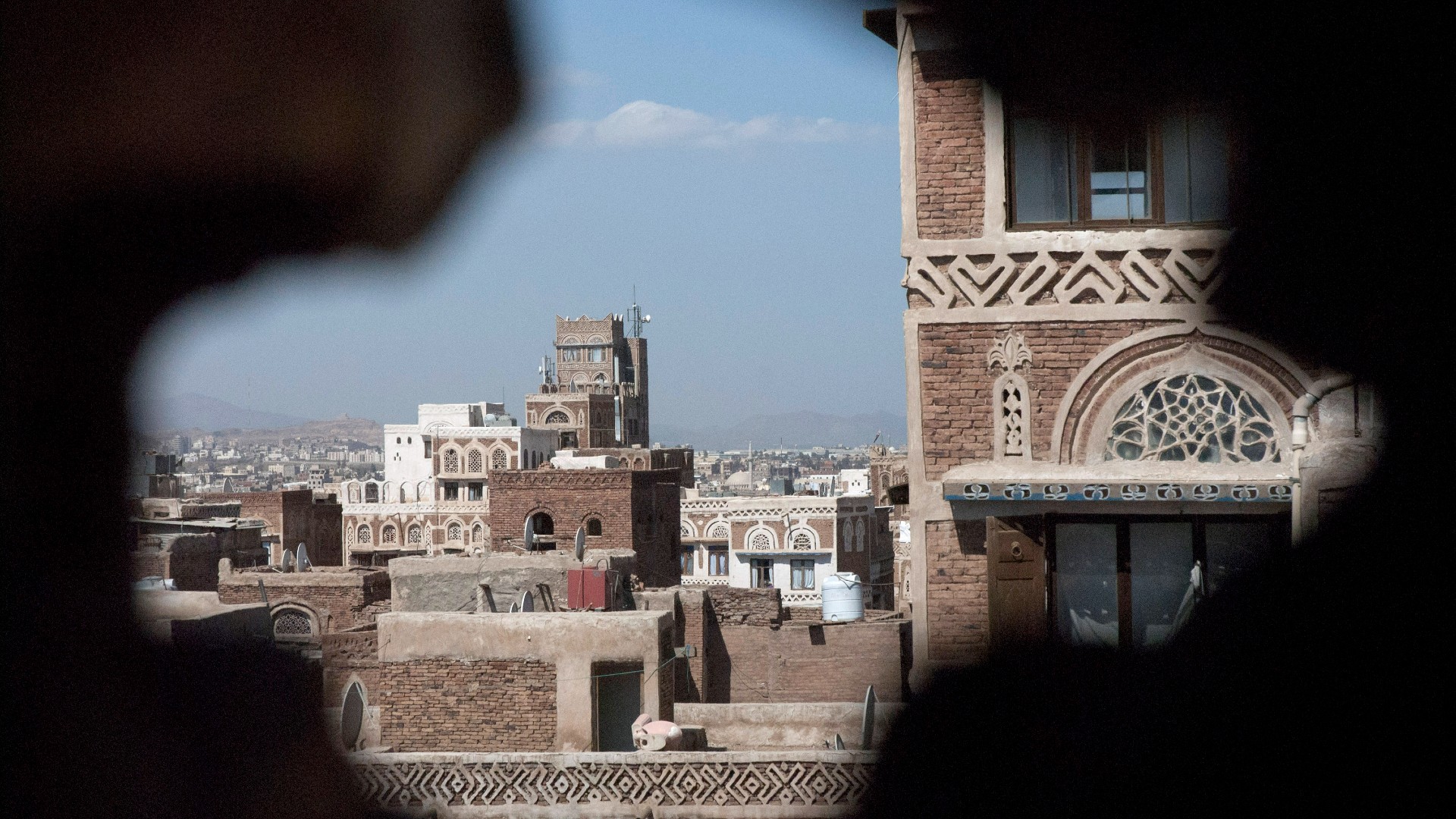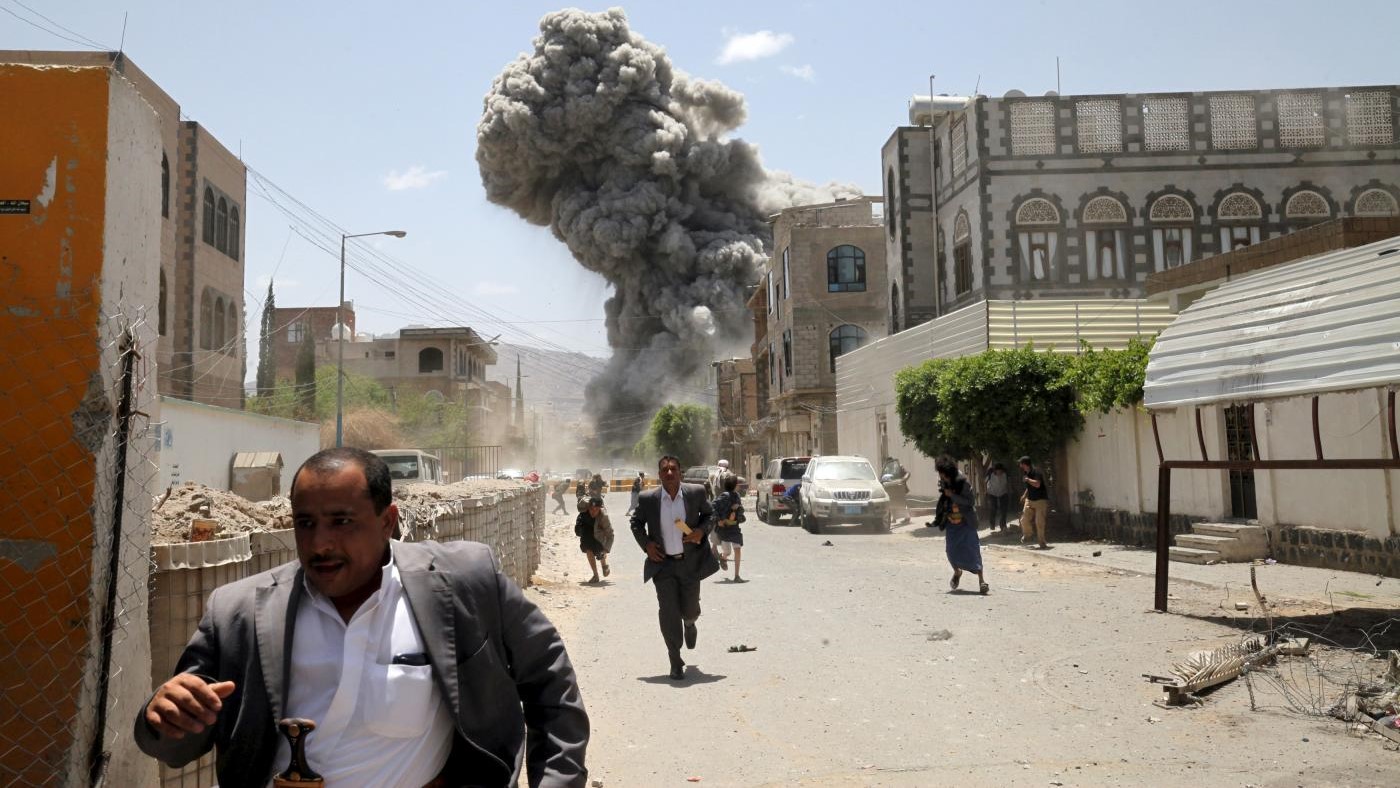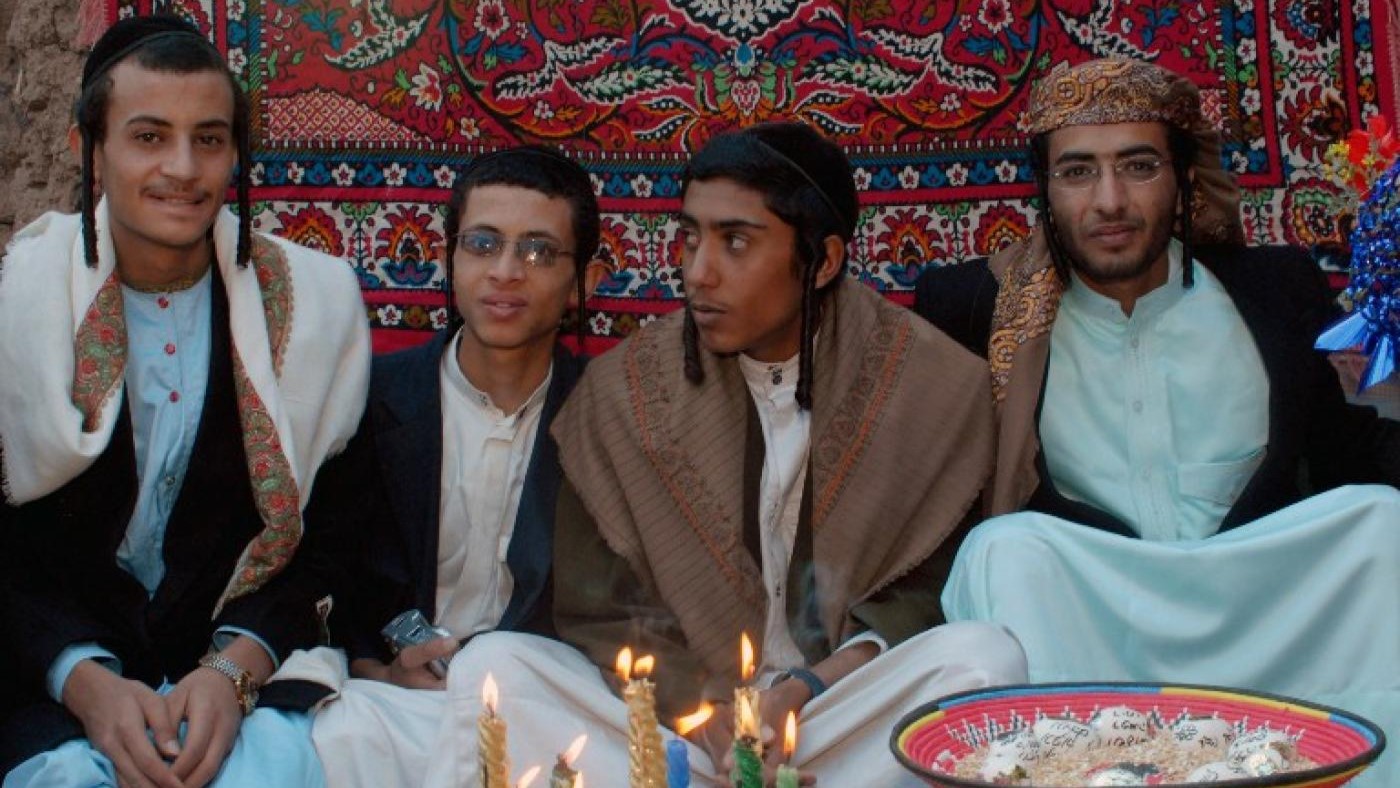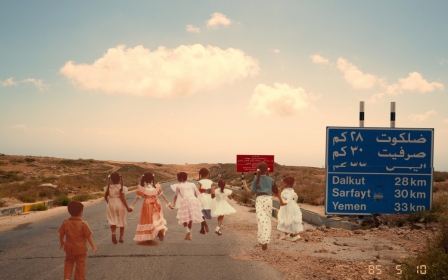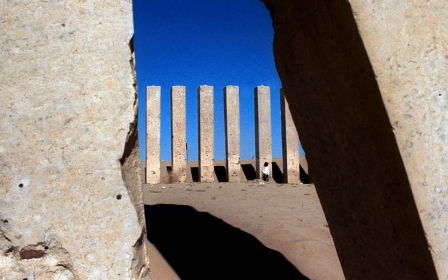Sanaa's Old City: A world heritage site threatened by war and neglect

It's hard to pinpoint when people first settled in Sanaa, the ancient capital of Yemen, especially as the city gives the impression it has always been inhabited.
Local traditions tend to be ambiguous on the question. In one, a son of Noah is said to have established the city, while others trace its origins to a pre-Islamic settlement around 2,500 years ago.
The Old City isn’t large but it’s still easy to get lost in its winding alleyways. There, high and compact gingerbread-like structures shoot out from the earth.
'Sanaa was a prize desired by many'
- Wael al-Ahnomi, journalist
These tower houses are made from rammed earth, fired bricks, and white gypsum. They aesthetically follow a high-contrast yet harmonious frieze pattern that enhances the placement of the buildings’ windows and floors.
Elsewhere, minarets peek through the skyline of the ancient metropolis, while at ground level, lush gardens provide shade and livelihoods for vendors.
Stay informed with MEE's newsletters
Sign up to get the latest alerts, insights and analysis, starting with Turkey Unpacked
More than a hundred mosques and 6,000 houses were built in Sanaa before the 11th century, including the Great Mosque of Sanaa, which is recognised as the first mosque built outside Mecca and Medina, during year six in the Hijrah calendar.
According to some sources, the Prophet Muhammad ordered its construction. But regardless of who commissioned it, the structure remains one of Islam’s earliest architectural feats, and the religion had firmly established itself in Sanaa under the fourth Rashidun caliph, Ali.
Access to the Old City is provided by a number of gates dotted around its partially preserved walls, among which is the iconic Bab Al-Yemen (Yemen Gate).
Inside are markets selling all kinds of wares and services, including food, clothing, goldsmiths, silversmiths, and other handicrafts. There are also cafes like Samsarat Wardah, hotels such as the Burj Al Salam, with its commanding views over the city, as well as cultural centres.
“Sanaa was a prize desired by many,” writes Wael al-Ahnomi for the Sanaa Center, as he recalls how the site became an area of conflict during the Abbasid Caliphate, from the 8th to 13th centuries, when the local Ziyadid, Rasulid, and Yu’furid dynasties all saw control of Sanaa as a way to expand their territories.
The city, once the capital of Aksumite Yemen, was also a multifaith centre for centuries. The Jewish quarter, established around the 17th century in the western part of the Old City, recalls a time when Jews and Christians co-existed alongside Muslims in Sanaa.
A World Heritage site in danger
Sanaa’s Old City today bears witness to its pre-Islamic, Islamic, and Ottoman construction eras, which Ahnomi calls “material record[s] of the city’s history".
More recently, westerners rediscovered the beauty of Sanaa through Pier Paolo Pasolini’s documentary The Walls of Sana’a (1971), which, after years when access was difficult for foreigners, revealed a site of stunning beauty. Pasolini fell in love with the Old City and is often credited for tirelessly advocating for its preservation.
This “appeal” to rescue Old Sanaa culminated in 1986 when Unesco gave the Old City World Heritage status in recognition of its “outstanding universal value".
Yet it took fewer than 30 years – a generation – for the site to be inscribed in the organisation's List of World Heritage in Danger, in 2015.
A combination of neglect, war, and natural disasters are now aggravating conservation and restoration efforts, which are often left to individuals, community organisations, or international aid.
Urban maintenance and repairs have been lacking in the Old City, leading to high-level criticism of Yemen's General Organization for the Preservation of Historic Cities in Yemen (GOPHCY) - the entity in charge of its preservation.
In 2014, Unesco expressed concern at the apparent "lack of engagement of GOPHCY in the major project to rehabilitate the water and sewage system being developed by the Sanaa secretariat and on the potential negative structural impacts that this project could have on individual buildings and on archaeology".
Nevertheless, even if the Yemeni heritage body were to be more involved, it lacks the teeth to enforce accountability.
Conflict has also directly impacted the Old City as Yemen’s Ministry of Defence is located just outside its walls.
In 2015, months after the Houthi movement took control of the city, a Saudi-led alliance began military operations in Yemen, which included air strikes on the capital.
“When the war started everything changed. It was a shock to see bombing in front of my eyes," Yemeni journalist Ahmad Algohbary told Middle East Eye.
He remembers the day a bomb fell on the Old City in 2015, killing a family, recalling that "they were farmers".
The war and economic crisis have also forced residents to sell their houses, which are then often rebuilt or reconstructed using materials and styles in violation of conservation norms. These changes to the ancient houses of the Old City could now mean that the area has its heritage status removed by Unesco.
In addition to war and neglect, climate change is also having an impact as natural disasters become more frequent.
Flash floods “have brought breathtaking, ancient towers to their knees,” says scholar Ahmed Nagi, now senior analyst for the International Crisis Group, referring to flooding in 2020.
It's reported that 131 people died, either directly from the floods or when houses collapsed, including the house of Yemeni poet Abdullah al-Bardoni.
In August 2022, heavy rainfall further caused the collapse of 10 historical buildings and damage to over 80.
For Nagi, the floods are a symbol of a wider loss of identity, and the cultural diversity that once made Sanaa a home for tolerance has rapidly shrunk in recent times.
As the Houthi movement took over Sanaa in 2014, their slogan - "curse to the Jews” - was quickly proclaimed on billboards and haphazardly painted on city walls, including those around the Old City, despite their heritage status.
Many Jews left as a result. As of March 2022, the United Nations reports that only one Jew remains in Sanaa, down from a community that was once numbered in the tens of thousands.
Prior to this latest exodus, around 49,000 Yemeni Jews had already left their homeland between 1949 and 1950, as part of an Israeli airlift named “Operation Magic Carpet.”
A unifying symbol for Yemenis
But despite these hardships and the current divisions, the Old City is still an enduring symbol of pride and unity for Yemenis.
“Walking down the winding, narrow paths of one of the oldest cities in the world is an experience no-one forgets,” writes Nagi.
Algohbary tells MEE that he "likes the simple life, the beauty, the culture of the Old City,” while remembering how he used to shop there ahead of Eid.
For Yemeni artists now exiled outside their country, the Old City of Sanaa is a place of nostalgia and reimagined memories.
“I remember the smell of the coffee, the copper market, the jewellery market, the bridal clothes. People are walking, people are buying, shouting, and haggling. When you walk through Bab Al Yemen, it’s beautiful. It’s a small world, the world of Sanaa,” mural artist Murad Subay told MEE.
Our Director-General calls on all parties to protect #Yemen’s invaluable #culturalheritage http://t.co/vLtr01gWsc pic.twitter.com/nop4w4I1zZ
— UNESCO 🏛️ #Education #Sciences #Culture 🇺🇳 (@UNESCO) March 27, 2015
“It’s the soul of Yemenis,” he adds, recalling the friendliness of the residents, the way one can wait in front of the house of a stranger and be invited in for water or coffee.
Farah Maktari includes visual symbols of the Old City in her contemporary artworks, which draw from the influence of Yemeni graphic art pioneer Fuad Al-Futaih.
“When visiting Bab al Yemen with my family as a child, it became a quest to find the alleyways, the stores, and treasures he would capture in his art,” she remembers, adding that: “This now plays a prominent role of inspiration for my own art practice.”
'You can walk inside and you can feel the souls of people walking with you'
- Murad Subay, artist
For artist Mazher Nizar, the Old City of Sanaa is a recurrent motif in his vignette-like watercolour paintings. They show slices of life in photographic detail, a time suspended.
“You can walk inside and you can feel the souls of people walking with you,” says Subay.
The Old City is continuously alive. Yumna Al-Arashi revisits the faces and fabric of the city in her “Ghosts of Yemen” series (2013).
In this monochromatic photo reportage, she introduces us to a place she describes as “old, vibrant, and majorly flawed" but a place she loves and misses.
This article is available in French on Middle East Eye French edition.
Middle East Eye delivers independent and unrivalled coverage and analysis of the Middle East, North Africa and beyond. To learn more about republishing this content and the associated fees, please fill out this form. More about MEE can be found here.


